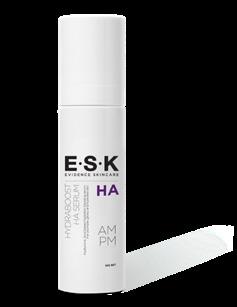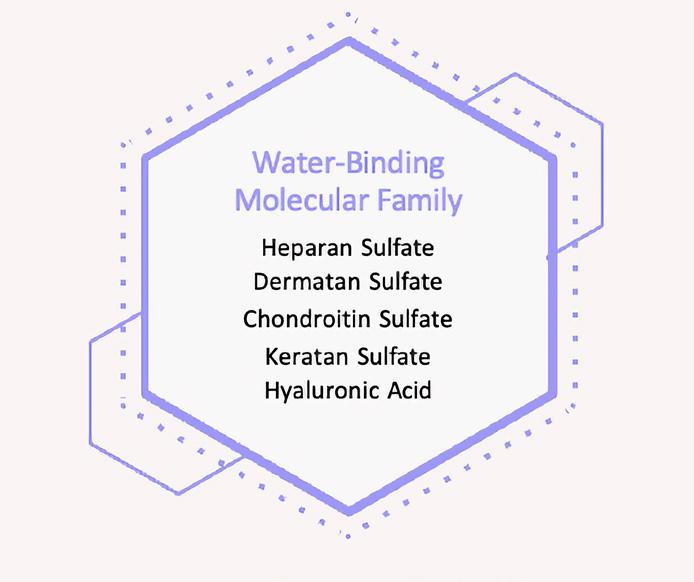
13 minute read
SKIN DISCOLOURATION
Lorna Bowes discusses the inflammation-pigmentation connection
In clinic, we see all too often how skin discolouration greatly impacts a person’s quality of life. It is a subject that has been documented for many centuries and is widely discussed both online and in dermatology, aesthetic and beauty conferences around the globe.
There are various types of skin discolouration, and ‘hyperpigmentation’ –meaning a skin condition with patches of skin that are darker than the surrounding skin – is often used as a generic term. Skin discolouration affects all skin tones and is often the result of chronic inflammation at a cellular level, resulting in visible irritation with redness accompanied by hyperpigmentation.
Different forms of skin discolouration may be associated with different skin tones
• Melasma is more prevalent in women and darker skin tones
• Hyperpigmentation/PIH is more prevalent in darker skin tones
• Rosacea is more prevalent in fairer in skin tones.
Melasma and hyperpigmentation
Melanocytes (pigment cells) produce excess melanin in the stratum basale through a process called melanogenesis, and the pigment travels to the skin’s surface.
Although the primary trigger of melanogenesis is UV exposure, it can also be caused by inflammation from other causes, hormonal stress and skin injury.
People with darker skin are more prone to stubborn generalised discolouration and patches.
Melasma and hyperpigmentation treatment
Put simply, there is no quick fix – treatment takes months of daily compliance and consistent maintenance.
Historically, hydroquinone has been the gold standard; however, it is a very controversial treatment with serious potential side effects; it is known as a melano-cytotoxic agent that can cause ochronosis, and therefore it can only be used for a short period of time. Rebound hyperpigmentation is a serious concern for those treating hyperpigentary disorders with hydroquinone.
We have an array of non-hydroquinone products available to us, but traditionally, they have shown less efficacy, e.g. kojic acid, arbutin, azaleic acid, tranexamic acid, neoglucosamine, vitamin C, retinoic acid and niacinamide.
More recently, various forms of cysteamine have come to market. Cysteamine is a simple aminothiol produced naturally in human cells, with strong effects on melanogenesis pathways, and it is a potent antioxidant. It has been used as the gold standard positive control test agent in multiple studies demonstrating the efficacy of hydroquinone. The ability to now produce a topical application of this agent opens new treatment avenues for patients with pigmentary disorders.
Rosacea
Rosacea is a chronic inflammatory skin condition characterised by recurrent flushing, central facial erythema, and telangiectasia.
LL-37 peptide has a high prevalence and expression level in rosacea patients. This releases IL-8 inflammatory cytokine, which in turn leads to inflammation and underlying redness.
PDL therapy can positively affect telangiectasia but is not very effective on underlying redness. We need to bear in mind that laser treatment causes an increase in redness for up to two weeks due to irritation from the treatment.
Prescribed medication such as Oxymetazoline is used to alleviate underlying redness but is transient and only lasts 12 hours.
Rosacea – new approaches
Introducing heparan sulfate (HS), a naturally occurring molecule in the glycosaminoglycan (GAG) family that bathes ALL the cells in our body and contributes to skin development and homeostasis, actively promoting skin health. HS and other GAGs, such as hyaluronic acid, are well-known super hydrators that bind and retain water, contributing to skin hydration.
HS helps preserve the structural integrity of collagen and elastin fibres. In the skin, heparan sulfate plays a critical role, providing an environment to help decrease inflammation and increase the production of elastin and collagen, as well as providing epidermal and dermal hydration. Managing this immune response goes a long way in managing the irritation and potential subsequent pigmentation and redness.
As we age, our bodies make less and less heparan sulfate. Decreased levels of HS can lead to skin irritation and skin dryness. Dryness compromises the protective barrier, causing the skin to be more reactive to intrinsic and extrinsic factors, resulting in an inflammatory cascade.
Hence, there is a need to replenish HS and return the barrier and skin homeostasis. Aging skin loses heparin sulfate faster than collagen and elastin, impairing its ability to repair and renew.
Unfortunately, as with all glycosaminoglycans, heparan sulfate is a large molecule, too large to penetrate the skin.
Endogenous heparan sulfate during inflammation
Heparanase is an enzyme that is upregulated during inflammation. HS is specifically degraded by heparinase; this results in GF and cytokines that are no longer bound to the cell by the HS, and therefore, they cannot effectively signal the cell toward repair, resulting in continued production of proinflammatory cytokines and hence a proinflammatory state (proteolytic environment).
Exogenous heparan sulfate analog during inflammation
Heparan sulfate analog cannot be degraded by heparanase and, therefore, is resistant to degradation by heparanase and so is able to penetrate and occupy the voids left by the endogenous HS.
Once HSA fills the voids, growth factors and cytokines are bound back to the cell (even in the inflammatory proteolytic environment), allowing a return towards homeostasis and normal function.
The launch of a heparan sulfate analog (HSA) molecule in a topical range, reducing the size and polarity of the molecule and modifying the shape, all of which allow for easy penetration into the epidermis and dermis opens new doors for successful management of rosacea and the risk or inflammatory hyperpigmentation.
The combination of HSA and cysteamine, therefore, holds great promise for the treatment of a wide range of pigmentary disorders.
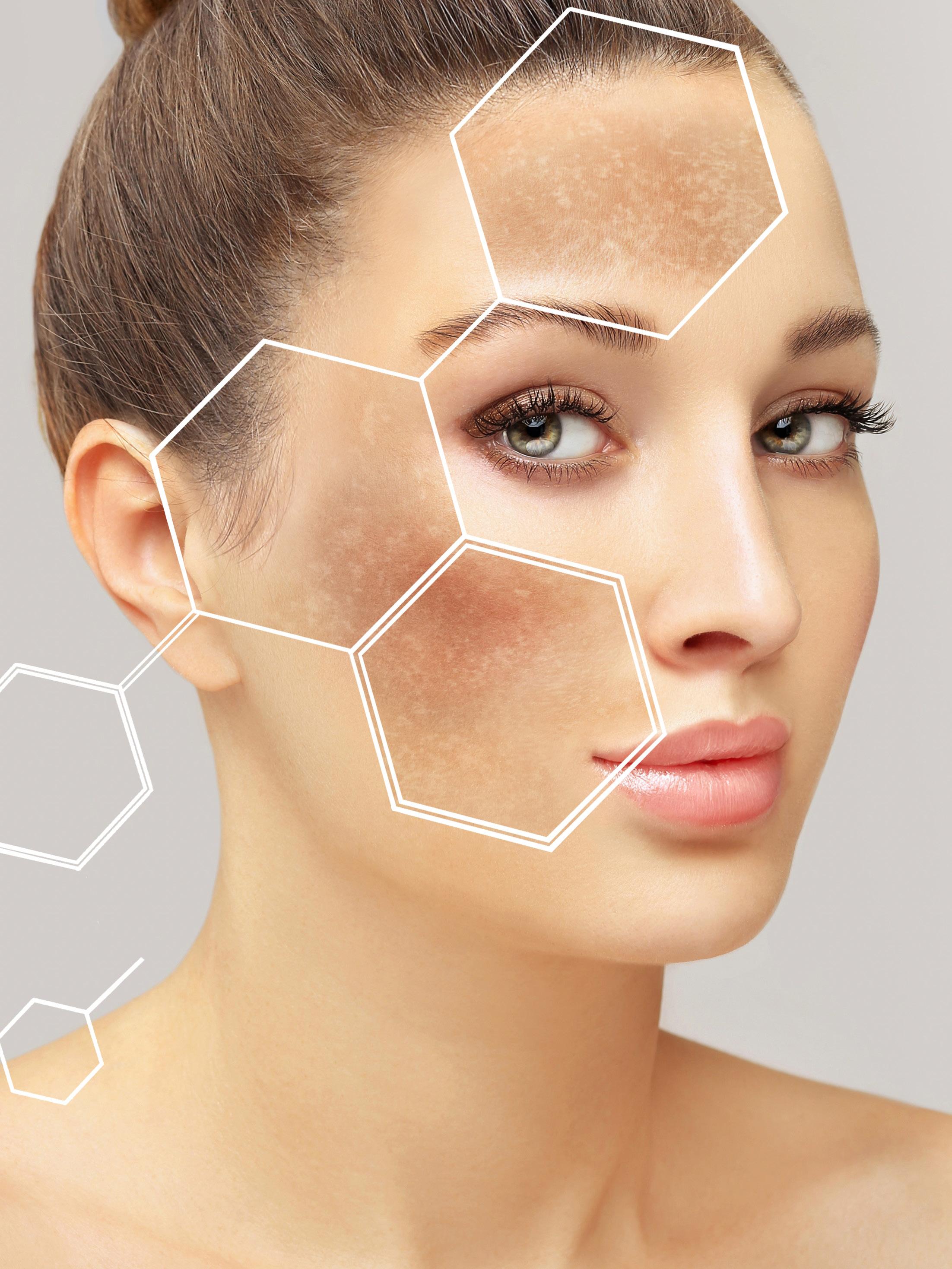
Both of these great ingredients are now available in the UK and Ireland, under the exciting US brand, Senté.
‘Senté Cysteamine HAS Pigment & Tone Corrector’ contains Heparan Sulfate Analog (HSA), Cysteamine HCI, Niacinimide, THD Ascorbate and phospholipids, among other ingredients. ‘Senté Dermal Repair Cream’ and ‘Senté Dermal Repair Ultra Nourish’ are both based on Heparan Sulfate Analog
(HSA), the former has a light texture and also contains Vitamin E, and Green Tea Extract. The latter includes Ceramides, Omega, Fatty Acids 3, 6, 9, and Vitamin E, hence the name ‘Ultra Nourish’.
AestheticSource are delighted to be partnering with Senté in the UK and Ireland as exclusive distributor of this exciting range. For further details on training, business support and ordering call 01234 313 130, or email orders@aestheticsource.com.


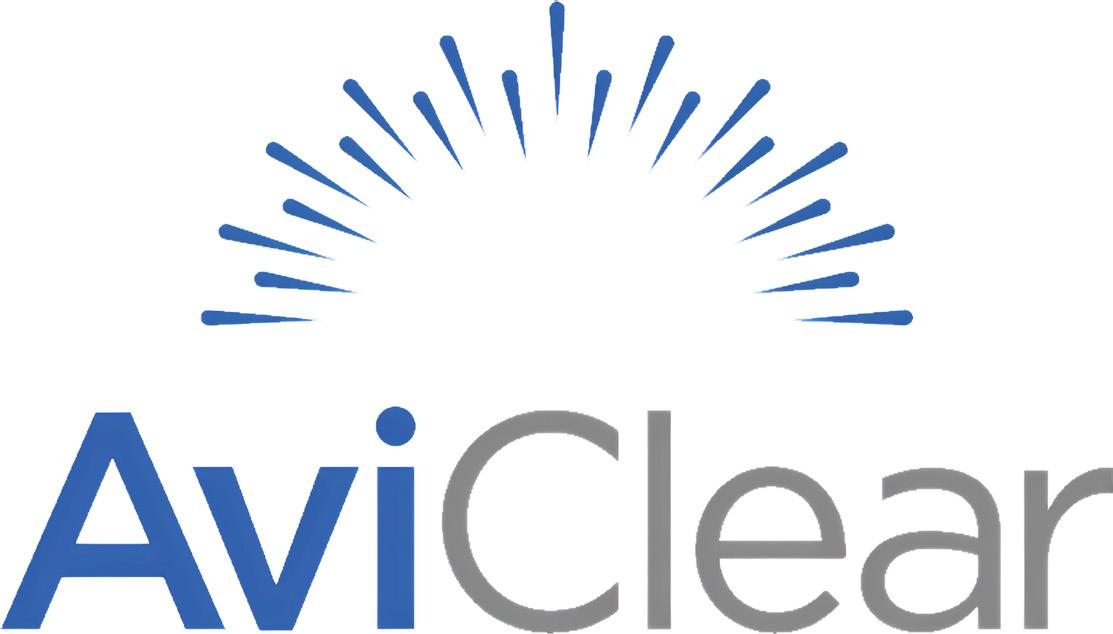
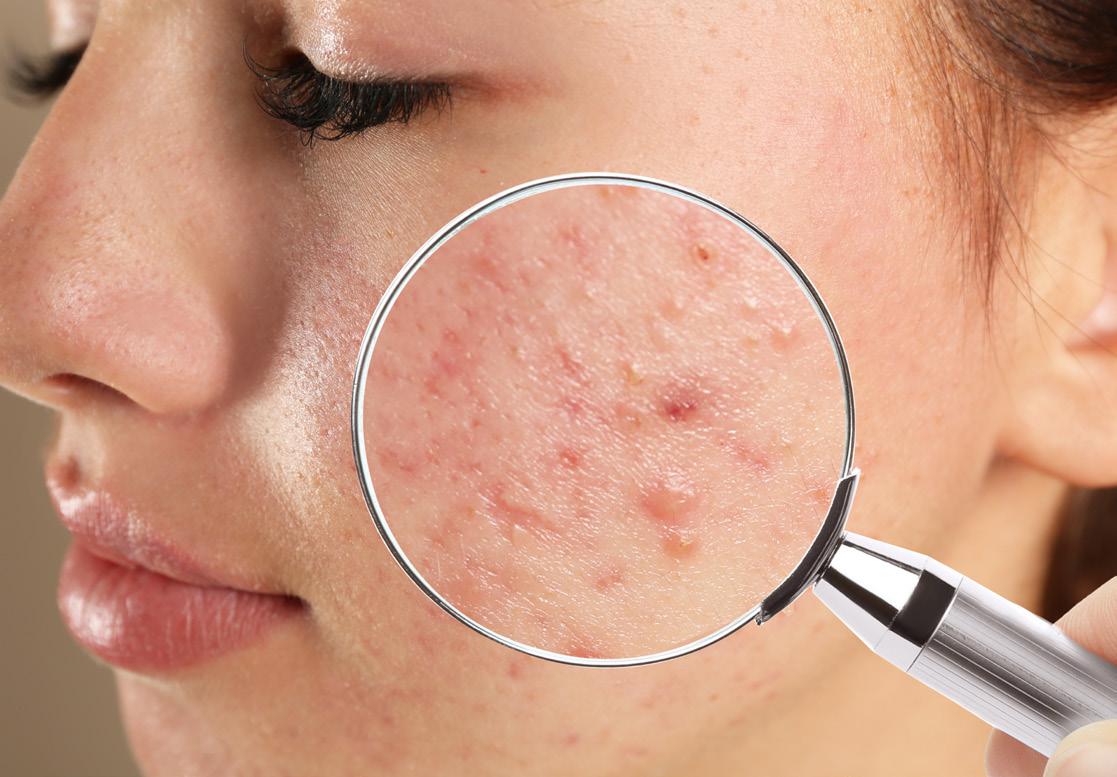
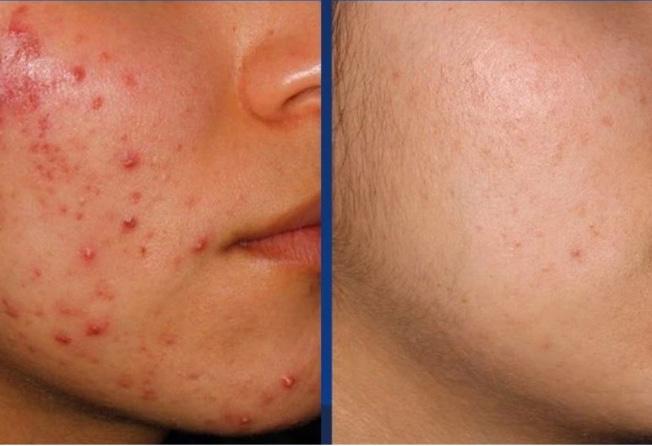
All Clear
UK launch of AviClear marks exciting innovation in acne treatment
Cutera has launched AviClear, the first and original FDA-cleared energy device for the treatment of mild to severe acne.
AviClear’s 1726nm wavelength treats acne at the source by selectively targeting and suppressing the sebaceous gland safely and effectively. Designed with patient comfort in mind, AviClear is enhanced with AviCool™ contact cooling for an optimal and safe treatment experience.
AviClear stands as a formidable rival to traditional treatments like isotretinoin (Roaccutane), utilising cutting-edge technology to address acne at its core. AviClear is the only device that works directly on the sebaceous glands in the skin; its revolutionary 1726nm laser suppresses sebum production and provides a long-term solution for individuals dealing with acne of all severities.
Ahead of the launch, Cutera announced Dr Tapan Patel (Aesthetic Doctor, PHI Clinic) and Dr Anjali Mahto (Cosmetic Consultant, Dermatologist, Self London) as its UK and Ireland KOLs.
The duo co- presented a symposium on AviClear at the ACE conference earlier this month (March), as part of the official UK and Ireland launch of the device.
Having suffered from acne from an early age, Dr Mahto has a unique understanding of the patient journey. She says, “AviClear is one the most exciting developments in the world of acne in decades. I have wanted an AviClear device in my clinic since I saw the clinical trials in the US. I don’t think it’s possible to understate what a game- changer this will be for the treatment of acne. I’m genuinely so excited to introduce this new approach – and alternative to medication-based treatments – to my acne patients.”
Dr Patel adds, “I have patients of all ages, skin tones and types suffering with acne. I am thrilled to be the first UK provider of AviClear, which significantly reduces the appearance and occurrence of breakouts after only three 30-minute sessions, with no downtime.”
How AviClear works
“AviClear uses laser therapy to selectively target the sebaceous glands, suppressing their activity. This halts the overproduction of sebum, knocking out a key trigger for the onset of acne, much as oral medications such as isotretinoin aim to do. AviClear is an FDA-cleared laser that is a genuine breakthrough in the field of dermatology, offering a long-term solution for mild, moderate and even severe acne,” says Dr Mahto.
Isotretinoin versus AviClear in a snapshot
Isotretinoin
Patients must be signed up to a pregnancy prevention programme which covers two methods of contraception (typically the pill and a barrier method).
Treatment protocol
“The AviClear protocol consists of three 30-minute treatments spaced three to four weeks apart, with no downtime after each; it provides a convenient and highly effective solution for acne sufferers.”
FDA clearance and clinical trials
“AviClear was initially cleared by the FDA on March 24 2022 as the first energy device able to successfully treat moderate and severe acne. Subsequently, it received an additional FDA clearance as the first and only device achieving long-term results treating mild to severe inflammatory acne vulgaris. Clinical trials have demonstrated impressive results, with 90% of patients experiencing visible improvement six months after their third session. Longterm efficacy was confirmed with a 92% improvement rate in 12-month clinical data. These results are seriously impressive, and I genuinely believe AviClear will change the lives of those unable or unwilling to take such types of treatment.”
But just how does it hold up the tablished “gold standard” acne treatment, isotretinoin?
AviClear
No birth control required.
Patients must have monthly blood and pregnancy tests. No pregnancy tests required. No bloodwork is typically required.
Systemic physical side-effects, including body-wide dry skin, sun-sensitivity, chapped lips, etc.
Mental wellbeing monitoring is required to safeguard against any potential negative impacts.
Unsuitable for those undergoing IVF, egg-freezing other fertility treatments.
No acne scarring treatment can be carried out at the same time.
No systemic side-effects; temporary dry skin may occur but is limited only to the treated area.
As no medication is taken, potential mental health sideeffects are extremely unlikely.
Suitable for anyone undergoing such fertility treatments.
Acne scarring treatment, such as with lasers, can be carried out alongside treatment.
Unsuitable for those unable to take oral medication. Suitable for anyone who cannot, or does not wish to, take oral medication.
In the comparative analysis above, AviClear emerges as a game-changer, eliminating many of the drawbacks with existing treatments, such as the need for birth control, frequent blood tests, etc, and without most of the potential side-effects associated with isotretinoin. AviClear is also suitable for all skin types and tones. Recent legislation introduced by the government will also affect how isotretinoin is prescribed, meaning that AviClear’s introduction to the UK is very timely.
“AviClear comes at a pivotal time for acne treatment, offering a timely alternative in the face of recent legislative changes that add considerable extra overheads to the prescription process for isotretinoin, including the need for two prescribers for under-18s,” says Dr Mahto.
Joining Dr Patel and Dr Mahto on the AviClear faculty are Dr David Eccleston
(Clinical Director of MediZen), Mr Kambiz Golchin (ENT Consultant, Facial Plastic Surgeon & Clinical Professor, Dr Rita Rakus Clinic) and Dr John Quinn (Cosmetic Doctor, Founder & Clinical Director of Quinn Clinics). They too are among the first UK and Ireland clinics to offer the AviClear system as part of the initial commercial rollout.
AestheticSource announce Hydrinity Distribution Partnership
Dermatological skincare brand Hydrinity Accelerated Skin Science is now exclusively available in the UK and Ireland through AestheticSource. Hydrinity launches in Spring 2024 with three key products: Renewing HA Serum with PPM6 Technology, an ultra-hydrating serum that is clinically proven to reduce the signs of ageing by going deep into the dermal layer; Restorative HA Serum with powerful peptides and antioxidants to help neutralise free radicals, maintain optimal moisture levels, reduce inflammation and stimulate the skin’s natural recovery process; and Hyacyn Active Purifying Mist which contains Hypochlorous Acid (HOCl) to treat blemishes, renew compromised skin, and deeply calm stressed and sensitive skin types, including those prone to eczema, psoriasis, and rosacea.
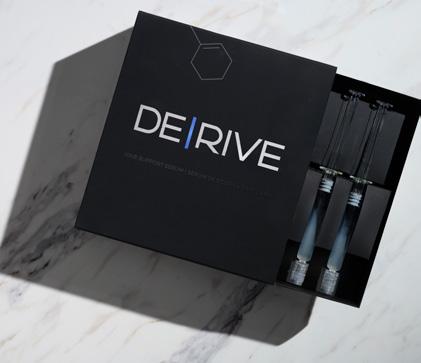
Aesthetic Medical Partnership launches hair support system DE|RIVE
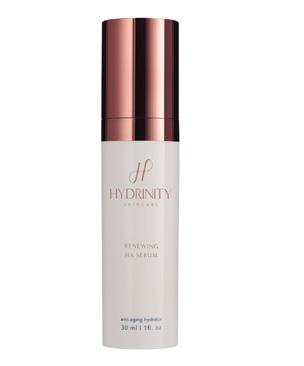
Aesthetic Medical Partnership (AMP) has unveiled a new addition to the EXO|E family of products. DE|RIVE is specifically formulated from the latest bio-based, patented plant-derived nanoparticle technology, allowing for continuous support to help nourish the skin and scalp while improving the appearance of thicker, fuller hair. It can be used in clinic as a standalone treatment or in combination with procedures such as microneedling, RF microneedling and ultrasound. The treatment is commonly used alongside AMP’s AquaFirmeXS.
Eden Aesthetics appointed official UK distributor for Velez
Specialist medical and aesthetic distributor Eden Aesthetics has expanded its brand portfolio with the introduction of Velez by Vesna skin treatment biotech masks. Velez masks are made from a high-tech 100% sterile material, originally developed to accelerate healing for injured and traumatised skin. This natural, renewable biopolymer of 100% pure cellulose has unique material properties due to its patented 3D nanostructured fibre network. Velez masks maintain a high humidity level that allows a steady but extensive cooling for up to two hours. The mask draws heat away from the skin and cools skin temperature by up to 6°C providing a soothing effect.

Mesoestetic launches mesopeel
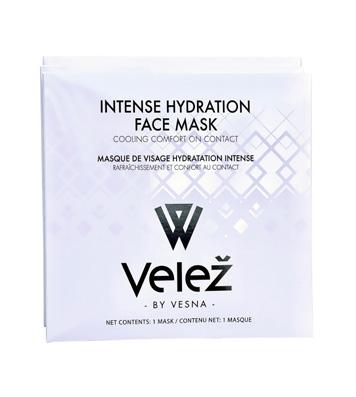
Skincare brand Mesoestetic has launched its new generation of mesopeel combined peels designed to address ageing, pigmentation, oily/acne skin and sensitivity. The range includes 12 new combination peels, eight of which contain the new potency-enhancing MD complex with arginine, shikimic acid and caffeic acid. This means the new peels have greater efficacy, innovation, and scientific evidence, says the brand.
5 Squirrels unveils Clarify Collection
5 Squirrels has unveiled a new addition to its portfolio – The Clarify Collection – which is designed to meet the needs of people with oily and blemish-prone skin. Building on the success of Clear, a degreasing cleanser launched two years ago, the range includes a Control oil control serum, Remove oil control pads, and Zap blemish control pen to unclog pores and combat bacteria.
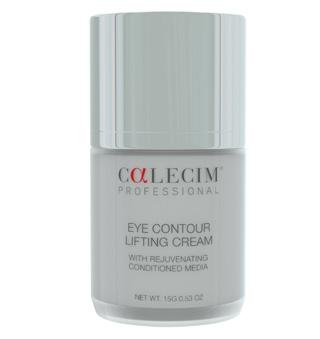
Calecim reveals new Eye Contour Lifting Cream
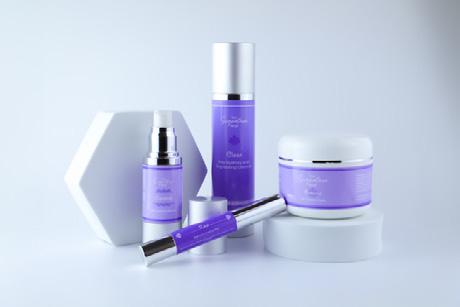
Eye Contour Lifting Cream is the latest addition to Calecim. The product has been developed to strengthen the skin, improve luminosity and support the delicate eye area. Ingredients include a gentle combination of organic acids, which work to accelerate the elimination of senescent cells that lead to fine lines and wrinkles. Cucumis sativus antioxidant, ascorbic acid, and lactic acid provide protective and soothing benefits, while niacinamide works to increase fatty acid ceramide levels in the skin and provides improved skin barrier function.
ESK announces Hydraboost HA Serum
Australian skincare brand ESK has announced its latest product – Hydraboost HA Serum. The serum harnesses a molecular blend containing 0.7% High Molecular Weight HA, 0.7% Medium Molecular Weight HA, and 0.2% Low Molecular Weight HA to target collagen growth, reduce signs of photo-ageing, accelerate wound healing, and improve skin hydration. It’s also indicated to aid the management of rosacea and eczema. The product also contains Panthenol, contributing to the serum’s effectiveness by reducing water loss, and enhancing hydration.
